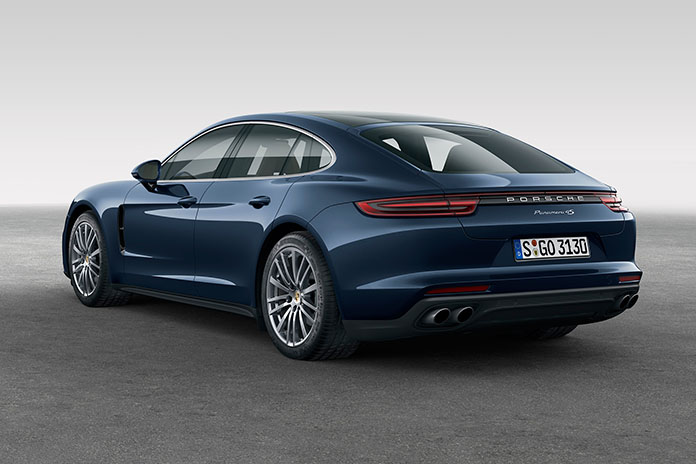With the motoring world turning its collective back on the Porker Panamera when it was released in 2009, this new Panamera has taken the classic 911 lines and just blown them a little bigger.
Now Porsche’s restyled Panamera is either the world’s sportiest luxury car or the world’s most luxurious sports car.
For 2017, Porsche has installed a 4 liter V8 engine, with twin turbos, that develops 550 horsepower and 567 pound-feet of torque – up from the 520 horsepower and 516 pound-feet of the earlier model.
Drive modes are Normal, Sport, Sport Plus and Individual. Suspension modes come in similar choices.
For comfort, the seats can be heated, and adjusted in an uncountable variety of ways. They also offer a massage function, with five programs and four settings for strength, but not to be tried while traveling.
The road test car, driven by an auto journalist in America was fitted with Porsche’s optional adaptive cruise control system. In his opinion, it may be the best on the road: The Panamera eased on the brakes, then eased on the accelerator, as traffic slowed down and sped up, as seamlessly as any car I’ve ever driven – better in many ways than the celebrated Tesla Autopilot behaved during its recent test drives in the Model X.

The handling is sublime, as intuitive at slow speeds on mountain roads as at high speeds on the highway.
And the power was equally sublime, coming on sweet and strong when needed, whether in Normal, Sport or Sport Plus mode.
The relatively new Porsche eight-speed transmission transfers the power seamlessly. In paddle-shift mode, though, the shifting lacked some of the razor sharpness of the PDK paddle systems in the 911 cars.
As on other Porsches, the Panamera doesn’t offer many set-it-and-forget-it options. If you like to drive in Sport mode, you’ll have to choose that every time you get into the car. If you like the Shiatsu massage, you’ll have to scroll through a menu on the dash and select it, every time. Seat settings can be stored, but many others require fresh assignments at the beginning of every drive.
Also, the Panamera won’t win any prizes for fuel economy. The tester was not able to match the EPA-approved 25 mpg highway rate. (The Panamera also comes in a hybrid format, for owners who insist on better fuel consumption.)
But the Panamera’s 23 gallon fuel tank means that, even at the 23 mpg rate I was getting, the car could have driven almost 550 miles between fueling stops.
The new, sleeker Panamera profile still offers enough cargo space for multiple suitcases or golf bags, and enough head and leg room for multiple full-sized passengers.
Indeed, Porsche boasts that the passenger space inside the Panamera offers comfortable seating for “four 95th percentile men.”
The Panamera is the lowest-selling vehicle in the Porsche family, coming in fifth behind – in order of sales numbers – the Macan, Cayenne, 911 and Boxster-Cayman segments.
But it still represented almost 5,000 premium vehicles sold in 2015 and 4,400 sold in 2016, at the end of the run for a car whose first generation was introduced in 2009, and which has sold 150,000 units since then.
With the arrival of this second-generation update, Porsche has good reason to be optimistic about growing the Panamera’s numbers.
2017 Porsche Panamera Turbo:
Vehicle type: Four-door, five-passenger sedan
Powertrain: 4 liter, V8, turbocharged gasoline engine
Transmission: Eight-speed automatic
Horsepower: 550
Torque: 567 pound-feet




